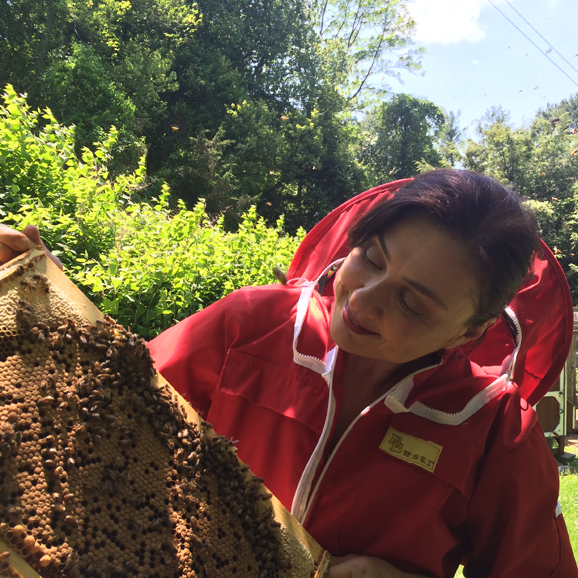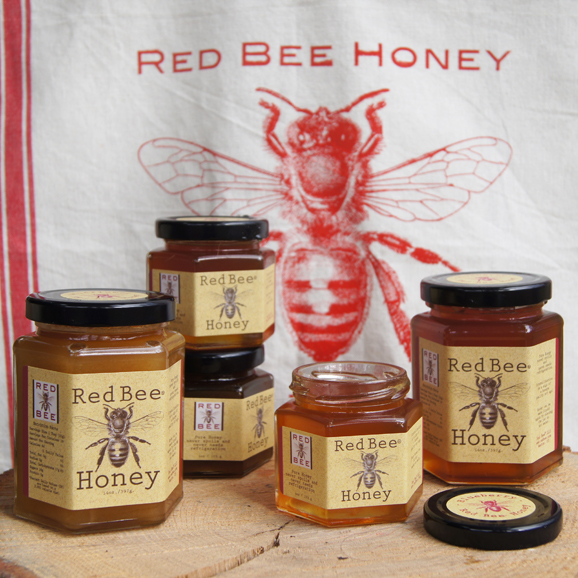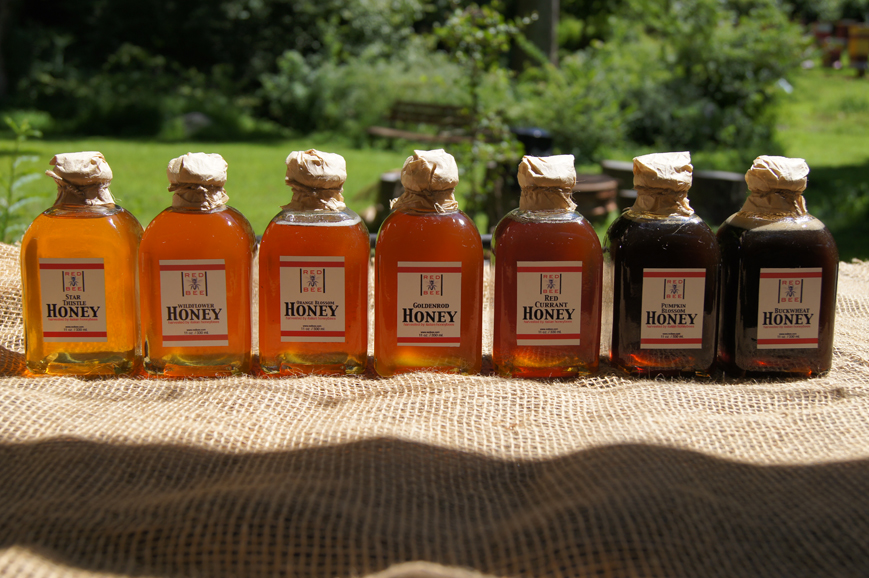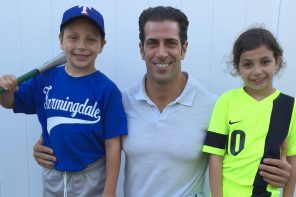“My fascination with honey goes back to its floral sources,” says Carla Marina Marchese, founding owner of Red Bee Honey in Weston. “It’s akin to wine: Every grape offers a different flavor.”
And similarly, the color and taste of honey is determined by the nectar of a particular flower, with orange blossom honey being lighter in hue, for instance, and wildflower honey, darker.
Marchese — who trained as a honey sommelier during a three-year course with the Italian National Registry of Experts in the Sensory Analysis of Honey and founded The American Honey Tasting Society — was recently hired by the National Honey Board to explain the finer points of the food at culinary institutes and conferences around the country.
“It is the biggest honor of my entire life,” she says.
And one that is a long time coming. Marchese was working in graphics and product development in New York City when a neighbor introduced her to beekeeping in 2000. According to the U.S. Department of Agriculture, there are 125,000 beekeepers in the United States with more than a million beehives. Most of the beekeepers are hobbyists, which is how Marchese began, with one hive. Gradually, however, her hobby began taking over her life and in 2003 she began producing honey formally and selling it wholesale and from her website. Among the companies she has sold her products to are Williams-Sonoma, White Flower Farm and Zingerman’s. Her beeswax lip balm is featured at the Delamar Southport.
“When I started, people were not intensely interested in farm-to-table,” she says, “and I had a hard time getting people interested.”
But the farm-to-table movement took off around 2008-09, she says, and about three years later the American public caught up with something that commercial beekeepers had been noticing since 2006: The honeybees were disappearing. This had to do with stress on the hives — which are driven to farms — and the chemicals used on the flowers that the bees pollinate, Marchese says. It does not affect the backyard beekeeper such as herself.
Today, she has 13 hives, each of which buzzes with sex — or, more accurately, the sexual division of labor. Each hive has a queen, a fertile female who lives three to five years and whose sole job is to lay eggs. The other females are infertile workers who live for about 45 days. The first half of their lives is spent as house bees tending the queen, the young and the hive. In the second half, they become forager bees — with some serving as scouts — gathering nectar for honey, tree sap for caulking and water and pollen (a protein source) for the young.
A small portion of the colony — about 10 to 15 percent — is made up of males (drones), who fly off to another family to impregnate that hive’s queen and promptly die. During these mating flights, Marchese says, a queen might mate with 14 to 20 drones successively.
Because of the brevity of a bee’s lifespan, “you always have to have a queen,” Marchese says. If a queen dies — or is killed off — the worker bees can create another queen out of a fertilized egg no more than three days old, whom they nurture with a secretion of royal jelly in a peanut-size cell.
While the workers continue to store the nectar in the cells of the wax honeycombs — fanning them with their wings to create the thick honey and sealing them with wax — Marchese keeps adding shallow boxes, each of which has nine frames, for their product. In the fall, she harvests the excess honey. (According to the National Honey Board, a hive will produce on average a surplus of 80 pounds each year.) In her new barn, or honey house, Marchese removes the frames and after scraping the caps off with a knife, places the frames into a hand-cranked extractor, which releases the honey by centrifugal force through a spigot into a bucket. The honey is then strained, bottled and labeled. This is where Marchese’s background in graphics and product development has come in handy.
“I saw an opportunity to take honey to a whole new level with attractive bottling and labeling,” says the author of “Honey Bee: Lessons From an Accidental Beekeeper” and (with Kim Flottum) “The Honey Connoisseur.”
For Marchese, beekeeping is like life: It’s all about the experience. It’s the reason she enjoys New Year’s Eve.
“There’s something magical about that time. It’s not a holiday where you have to buy a lot of things.”
Instead, she can kick back with a glass of Champagne, garnished with a piece of honeycomb and a platter of fruit, cheese, nuts and honey.
“A good experience to me is food and friends.”
For more, visit redbee.com.







